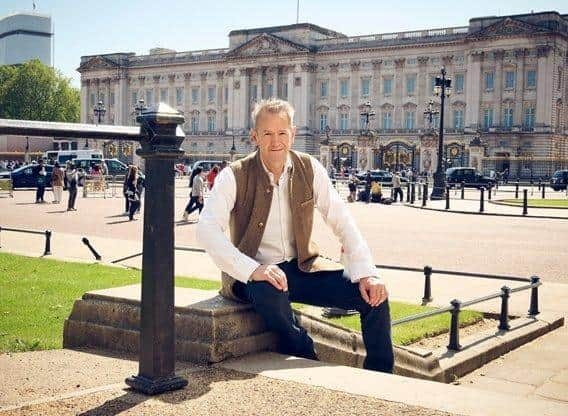Alexander Armstrong looks behind the closed doors at Buckingham Palace
and live on Freeview channel 276
Saturday night has long been royalty night on Channel 5, and it’s clearly been a hit with viewers.
(So much so, that some cynics may be wondering Channel 4 is trying to get in on the act – tonight the channel is airing Queens That Changed the World and the final two episodes of the Tudor drama Becoming Elizabeth.)
Advertisement
Hide AdAdvertisement
Hide AdWhile some of Channel 5’s monarchy-themed offerings may feel like they are going over familiar ground, others have offered a fresh perspective on history, and luckily Buckingham Palace with Alexander Armstrong has fallen into the latter category.


As the Pointless presenter observes, while Buckingham Palace may be one of the most famous landmarks in Britain, few of us know what has gone on behind its closed doors over the years, and many viewers were unaware of just how much the building itself has evolved.
Armstrong told What to Watch: “[The series] tells the story of the role the palace has played in public life, and also of the people who have lived and worked in it from the beginning.
“And that beginning is quite hard to imagine these days because Buckingham Palace was originally a comparatively modest country house on the edge of London, surrounded by parkland, marshland and cow fields, until it was gradually ‘upgraded’ into an ever-grander property!”
Advertisement
Hide AdAdvertisement
Hide AdThe opening episodes have explored the transformation – according to Armstrong, “it’s what it must be like if an old friend goes off to become a body-builder” – but when the latest instalment picks up the story in 1881, the Palace is much as we know it today.
It had an astounding 700 rooms spanning six floors, so definitely a home fit for a Queen, yet the 62-year-old Victoria spent relatively little time there as it contained too many memories of her beloved late husband, Albert.
Armstrong discovers how even if the monarch was not in residence, the palace remained a hive of activity, and finds a census naming some of the hundreds of workers who lived on site.
Then in 1887, Queen Victoria celebrated her Golden Jubilee, and it seemed even she agreed that Buckingham Palace was the perfect venue for a party.
Advertisement
Hide AdAdvertisement
Hide AdJJ Chalmers finds out what was on the menu at the grand state banquet thrown that day, while Armstrong learns why it was the Queen’s meeting with 24-year-old servant Abdul Karim that would set tongues wagging at court.
However, the Victorian era was coming to an end – in 1901, the Queen died from a stroke, and her son, Edward VII, ascended to the throne.
As Chalmers discovers, the new King barely survived his coronation – the event had to be delayed while he underwent emergency surgery in a hastily assembled operating theatre inside the palace – yet during his reign he brought new life to the royal residence, marking a sharp contrast to his more austere mother.
But with his death nine years later came more change, and a looming war meant the Palace’s future was far from certain…